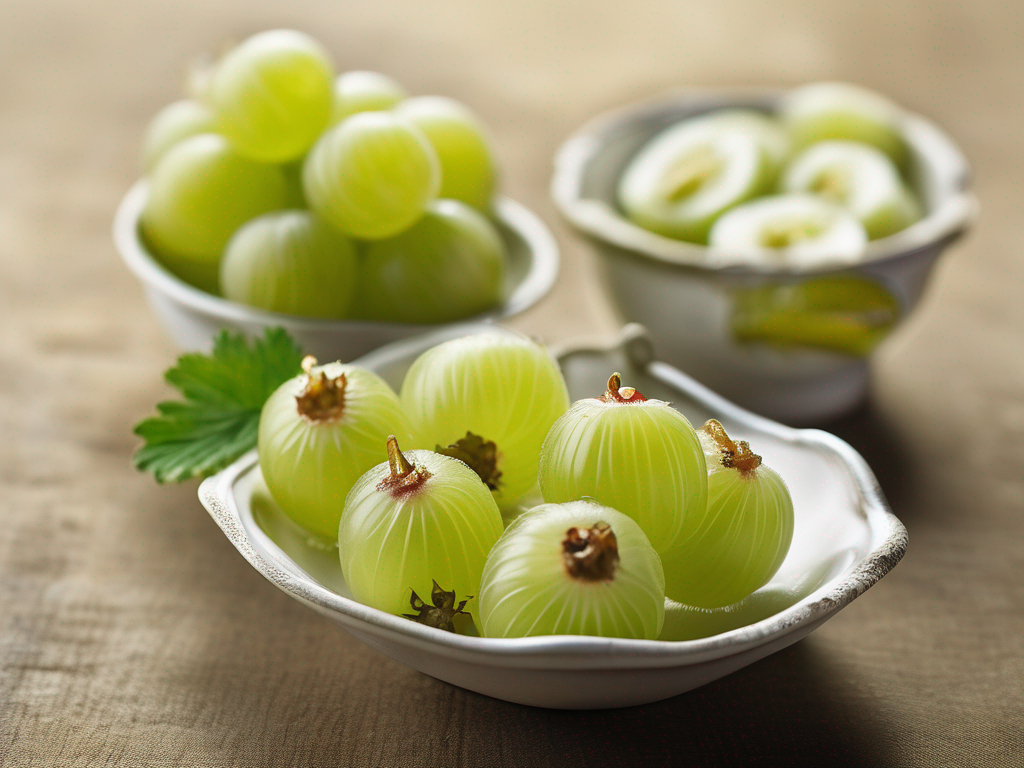
Is Your Gooseberry Safe to Eat? How to Tell If It Has Gone Bad
Get Your Free Food Safety Cheat Sheet
30 most common foods with instant answers. Print it and stick it on your fridge—completely free!
Is Your Gooseberry Safe to Eat? How to Tell If It Has Gone Bad
Gooseberries are delicious, versatile berries that can be used in a variety of dishes, from jams and pies to salads and sauces. However, like all perishable fruits, gooseberries can go bad if not stored properly. In this blog post, we will discuss how to tell if your gooseberries have gone bad and are no longer safe to eat. (Gooseberry)
Understanding Gooseberry Shelf Life and Storage
Before we dive into how to tell if your gooseberries have gone bad, let's first understand their shelf life and the best ways to store them to prolong their freshness.
Gooseberry Shelf Life
- Fresh gooseberries typically last for about 1-2 weeks in the refrigerator.
- Frozen gooseberries can last for up to 6-12 months if stored properly.
Proper Gooseberry Storage Tips
- Refrigeration: Store fresh gooseberries in the refrigerator in a breathable container or perforated plastic bag.
- Freezing: To freeze gooseberries, wash and dry them thoroughly, then spread them out on a baking sheet in a single layer. Once frozen, transfer them to a freezer-safe bag or container.
Now that we have covered the basics of gooseberry shelf life and storage, let's move on to how to tell if your gooseberries have gone bad.
Signs Your Gooseberries Have Gone Bad
Gooseberries, like all fruits, will eventually spoil if not consumed in time. Here are some signs to look out for to determine if your gooseberries are no longer safe to eat.
Visual Inspection
- Mold: If you notice any mold growth on the surface of the gooseberries, discard them immediately.
- Discoloration: Gooseberries that have turned brown, black, or mushy are likely spoiled and should not be consumed.
- Wrinkled or Shriveled Skin: Gooseberries with wrinkled or shriveled skin are past their prime and may not be safe to eat.
Texture and Smell
- Soft or Slimy Texture: If the gooseberries feel overly soft or slimy to the touch, they have likely gone bad.
- Off Odor: Spoiled gooseberries may have a sour, fermented, or unpleasant odor.
Safety Tips for Handling Gooseberries
To ensure the safety of your gooseberries and prevent them from going bad prematurely, here are some additional tips to keep in mind:
- Wash Thoroughly: Before consuming or using gooseberries in recipes, wash them thoroughly under running water to remove any dirt or contaminants.
- Avoid Cross-Contamination: Store gooseberries away from raw meat, poultry, and seafood to prevent cross-contamination.
- Use Proper Storage Containers: Choose breathable containers or perforated bags for storing gooseberries in the refrigerator to prevent moisture buildup.
Conclusion
In conclusion, gooseberries are a delicious and nutritious fruit that can add a burst of flavor to various dishes. By understanding how to properly store and handle gooseberries, as well as recognizing the signs of spoilage, you can ensure that your gooseberries are safe to eat and enjoy. Remember to conduct regular inspections, practice good food safety habits, and follow the tips outlined in this blog post to make the most of your gooseberries. If in doubt, it's always better to err on the side of caution and discard any gooseberries that show signs of spoilage. Check out more food-related content here. (Gooseberry)
Authoritative Food Safety References
These agencies and university labs inform every tip and health precaution we publish.
USDA FoodKeeper – Cold Storage Guidelines
Official refrigerator, freezer, and pantry timelines maintained by the U.S. Department of Agriculture.
Visit USDA FoodKeeperFDA Produce Safety Rule & Grower Guidance
Field-to-fridge handling practices that prevent contamination of fruits, vegetables, and leafy greens.
Visit FDA Produce SafetyCDC Foodborne Illness Prevention Hub
Surveillance-backed guidance on pathogens, symptoms, and steps to reduce foodborne illness risk.
Visit CDC Food SafetyUC Davis Postharvest Technology Center
University research detailing optimal storage atmospheres for produce after harvest.
Visit UC Davis PostharvestPenn State Extension – Home Food Preservation & Safety
Peer-reviewed extension bulletins on safe canning, chilling, and reheating practices.
Visit Penn State ExtensionGet Your Free Food Safety Cheat Sheet
30 most common foods with instant answers. Print it and stick it on your fridge—completely free! Want more? Upgrade to the complete guide with 70+ foods.
Scan your food directly and get instant safety info using our AI-powered camera feature.